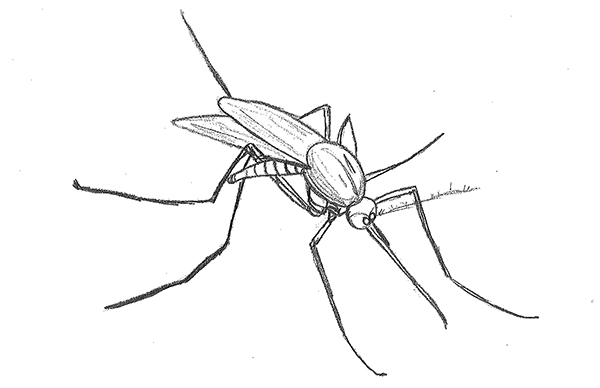NYUAD students win award for shocking mosquito-killing development

The Zika virus is transmitted to people through mosquito bites.
October 30, 2015
A group of NYU Abu Dhabi students won a bronze medal at a synthetic biology competition on Sept. 30 for a cheap, sustainable alternative to mosquito traps.
The group — composed of eight engineering, mathematics and biology students, as well as assistant professor Kourosh Salehi-Ashtiani — was the first team from the United Arab Emirates to enter the International Genetically Engineered Machine competition. Their creation is an electric mesh net that attracts mosquitos with acids secreted by E. coli bacteria.
NYUAD sophomore Jovan Jovancevic said the trap is self-sustaining. First, mosquitos enter the trap and are electrocuted by the mesh. They then fall onto a medium containing E.coli, which digests them and subsequently grows, continuing the process.
“The compounds we use to attract mosquitoes are produced naturally by animals as they respire, and therefore are less harmful to the environment that alternative mosquito-control agents such as pesticides,” Jovancevic said.
The ultimate target for the net, however, is not mosquitoes; it is the diseases they carry, namely, malaria.
Malaria remains a highly infectious and devastating disease in the developing world. Of an estimated 198 million people who get diagnosed each year, over 500,000 die. Most of these are children under 5 years old.
Ana Rodriguez, an associate professor in the Department of Microbiology, points out that malaria outbreaks can have other lasting repercussions.
“Malaria is a heavy burden on the economy of developing countries,” Rodriguez said. “Besides the high death toll, it also leaves neurological sequelae in children that developed cerebral malaria.”
Jovancevic said the group did not plan to build a mosquito net at the outset.
“We arrived at the idea for the project serendipitously,” Jovancevic said. “One of our most promising initial ideas was a mold detector, considering how much of an issue mold is here in the UAE.”
Jovancevic also said they are hopeful the nets will eventually be implemented on a wider scale.
“We still need to verify the construct and test it on actual mosquitoes,” Jovancevic said. “The project looks promising at this point since almost all aspects are covered. However, it will definitely take some more to work to bring it outside the lab”.
Kourosh Salehi-Ashtiani, an Associate Professor of Biology at NYUAD, highlighted the intellectual diversity of the students who worked on the project, and their drive to compete.
“It is worth mentioning that our iGEM team was really formed by the students themselves as opposed to through the faculty encouraging or convincing the students to participate,” Salehi-Ashtiani said. “To me, this, beside being a wonderful thing in and of itself, highlights the presence of a great deal of interactions among our students across discipline boundaries.”
Email Thomas Perocchio at [email protected].
CORRECTION: A previous version of this article improperly attributed Mr. Salehi-Ashtiani’s quotes to the communications director at NYUAD.
























































































































































